10 Interesting Facts about Neptune
Below is a list of 10 interesting facts about Neptune that KnowIndier wants to share with you. Stay tuned!
Neptune is the Most Distant Planet
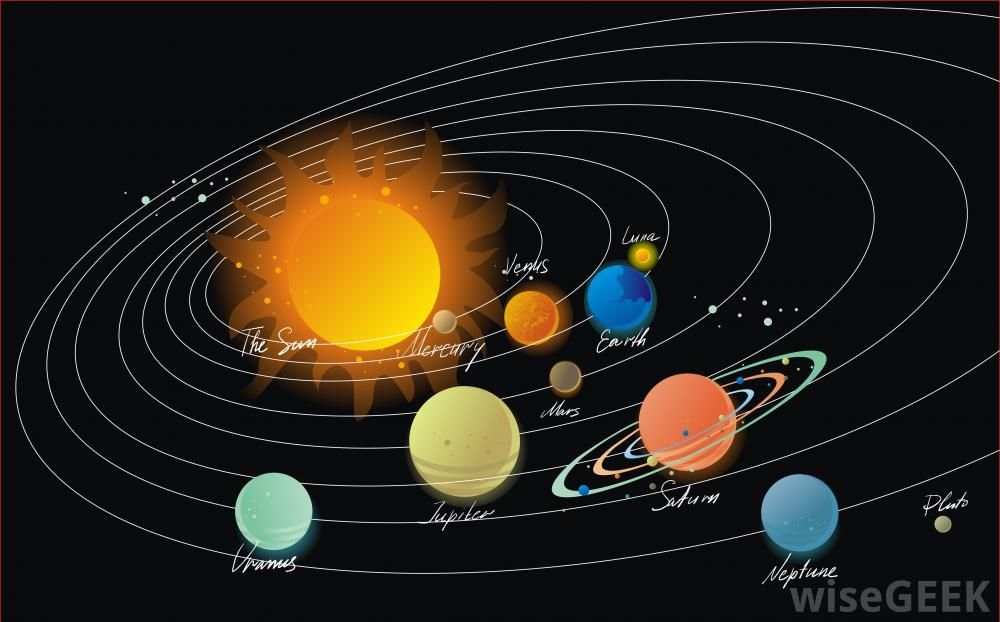 |
| Facts about Neptune - Photo: Pinterest |
This may sound like a pretty simple statement, but it’s actually rather complicated. When it was first discovered in 1846, Neptune became the most distant planet in the Solar System. But then in 1930, Pluto was discovered, and Neptune became the second-most distant planet. But Pluto’s orbit is very elliptical; and so there are periods when Pluto actually orbits closer to the Sun than Neptune. The last time this happened was in 1979, which lasted until 1999. During that period, Neptune was again the most distant planet.
Neptune has the Strongest Winds in the Solar System
Think a hurricane is scary? Imagine a hurricane with winds that go up to 2,100 km/hour. As you can probably imagine, scientists are puzzled how an icy cold planet like Neptune can get its cloud tops t0 move so fast. One idea is that the cold temperatures and the flow of fluid gasses in the planet’s atmosphere might reduce friction to the point that it’s easy to generate winds that move so quickly.
In 2011, Humanity Marked Neptune's "First" Birthday
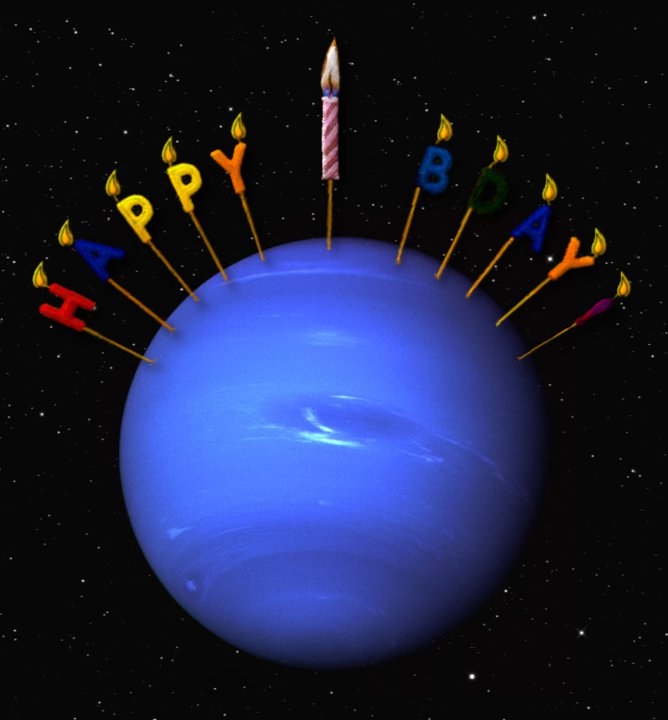 |
| Photo: Journal to the Stars - WordPress |
It is impossible to see Neptune with the naked eye. Galileo first recorded its existence with his telescope, though he identified it as a star, misled by its slow orbit. In the 19th century, astronomers noticed an aberration in the orbit of Uranus, and Urbain Joseph Le Verrier, a French mathematician, went to work on the problem. With a pen and paper, he worked out not only the existence of a planet, but also its mass and position. In 1846, Johann Gottfried Galle made the observation at the request of Le Verrier, and sure enough, found a planet. A couple of weeks later, he also observed Triton, Neptune's largest moon.
It took 165 years for a full Neptunian year to elapse. That's why we celebrated Neptune's "first" birthday in 2011.
Neptune's Ring are Clumpy
Unlike the rings of Saturn, the six Neptunian rings are thin, young, and dark. Their color is due to their composition: radiation-processed organic material. One of the rings features three thick, distinct clumps named Liberty, Equality, and Fraternity. The clumps are something of a mystery: The laws of physics dictate that they should be spread out evenly, as you see at Uranus, but there they are, little lumps in space. (Before Voyager 2 visited, only the clumps were visible, and were called arcs, part of an incomplete ring.) The most likely cause for the ring irregularity is gravitational meddling by the moon Galatea.
Neptune was Originally Called “Le Verrier’s Planet”
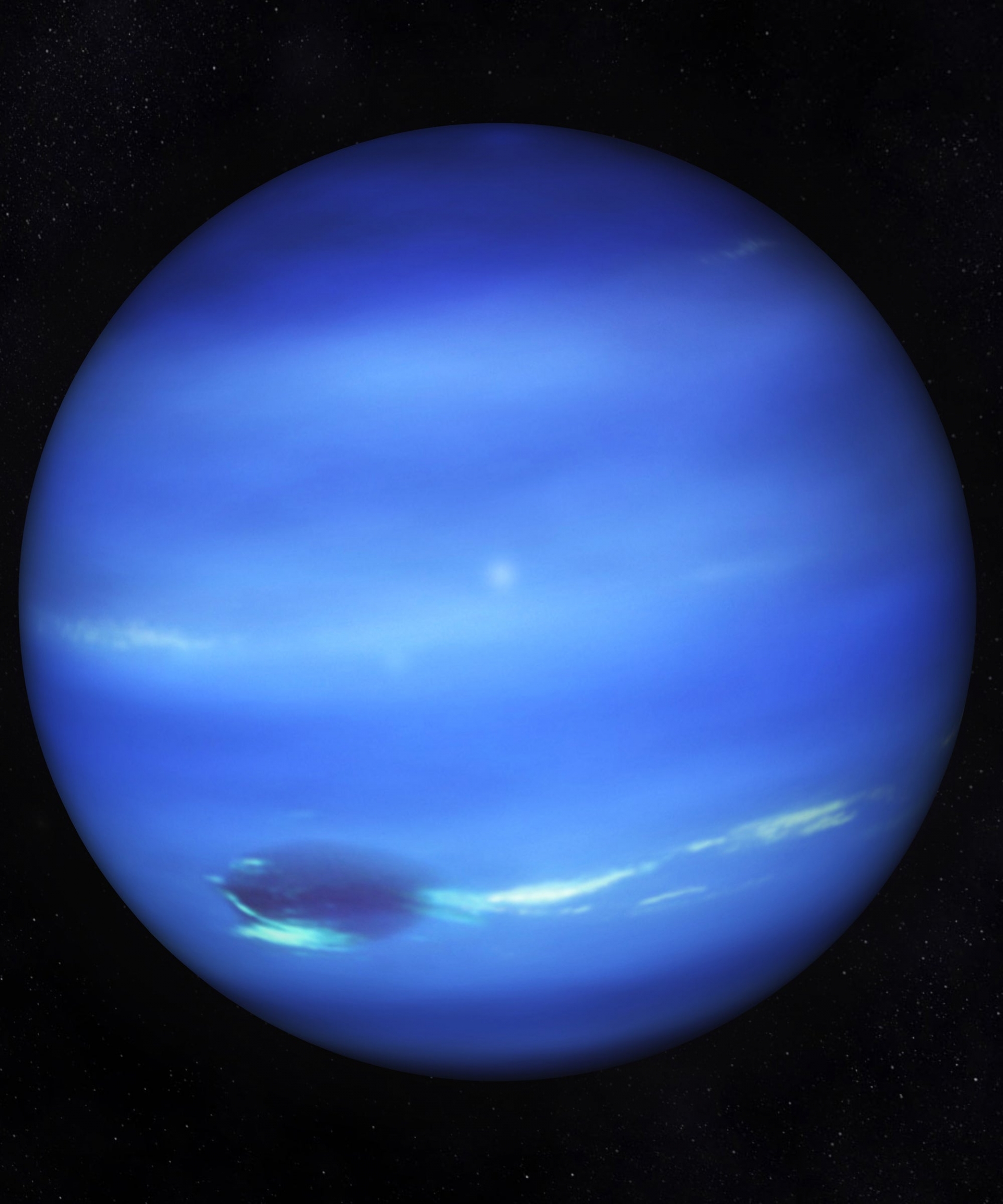 |
| Photo: Refinery29 |
Shortly after its discovery, Neptune was only referred to as “the planet exterior to Uranus”.
Or more commonly “Le Verrier’s planet”. After the man who discovered it, Urbain Le Verrier.
There were a number of suggestions about what to call this planet, but in the end, the man who discovered this planet chose the name, Neptune.
Neptune’s Great Dark Spot
The Great Dark Spot in the southern atmosphere of Neptune was first discovered in 1989 by the Voyager 2 spacecraft. It was an incredibly large rotating storm system with winds of up to 1,500 miles per hour, the strongest winds recorded on any planet. How such powerful winds were discovered on a planet so far from the sun is still considered a mystery to this day.
Data from the Voyager 2 spacecraft also showed that the Great Dark Spot varied significantly in size during their brief pass of the planet. When Neptune was viewed by the Hubble Space telescope in 1994 the Great Dark Spot had vanished, although a different dark spot had appeared in Neptune’s northern hemisphere.
Neptune’s Surface Gravity is Almost Earth-like
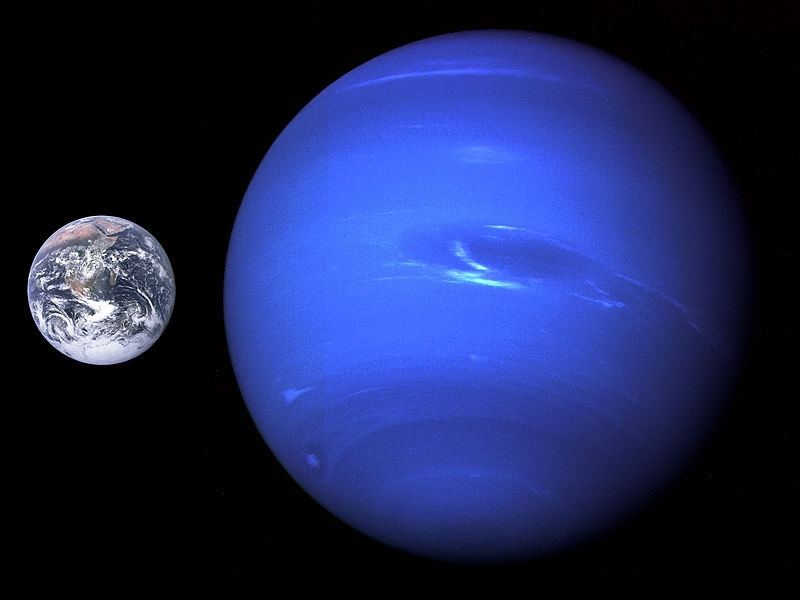 |
| Photo: Planets for Kids |
Neptune is a ball of gas and ice, probably with a rocky core. There’s no way you could actually stand on the surface of Neptune without just sinking in. However, if you could stand on the surface of Neptune, you would notice something amazing. The force of gravity pulling you down is almost exactly the same as the force of gravity you feel walking here on Earth.
Neptune is the Coldest Planet in the Solar System:
At the top of its clouds, temperatures on Neptune can dip down to 51.7 Kelvin, or -221.45 degrees Celsius (-366.6 °F). That’s almost three times the coldest temperature ever recorded here on Earth (-89.2°C; -129°F), which means that an unprotected human being would flash freeze in a second! Pluto gets colder, experiencing temperatures as low as 33 K (-240 °C/-400 °F). But then again, Pluto isn’t a planet any more (remember?)
Neptune’s Atmosphere
Neptune has an incredibly thick atmosphere comprised of 74% hydrogen, 25% helium and approximately 1% methane. Its atmosphere also contains icy clouds and the fastest winds recorded in the solar system. Particles of icy methane and minor gases in the extremities of the atmosphere give Neptune its deep blue colour. The striking blue and white features of Neptune also help to distinguish it from Uranus.
Neptune’s atmosphere is subdivided into the lower troposphere and the stratosphere with the tropopause being the boundary between the two. In the lower troposphere temperatures decrease with altitude however they increase with altitude in the stratosphere. Hydrocarbons form hazes of smog that appear in the entire upper atmosphere of Neptune and hydrocarbon snowflakes that form in Neptune’s atmosphere melt before they reach its surface due to the high pressure.
Neptune is the Smallest of the Gas Giants:With an equatorial radius of only 24,764 km, Neptune is smaller than all the other gas giants in the Solar System: Jupiter, Saturn and Uranus. But here’s the funny thing: Neptune is actually more massive than Uranus by about 18%. Since it’s smaller but more massive, Neptune has a much higher density than Uranus. In fact, at 1.638 g/cm3, Neptune is the densest gas giant in the Solar System. |
If you have any comments, feel free to add them to the comment section below, and don't forget to like, share and follow KnowInsider for more interesting news!
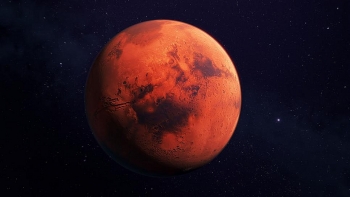 TOP 9 interesting Facts about Mars TOP 9 interesting Facts about Mars Mars is the fourth planet from the Sun and last of the terrestrial planets, that's what we already know about this world. How about the ... |
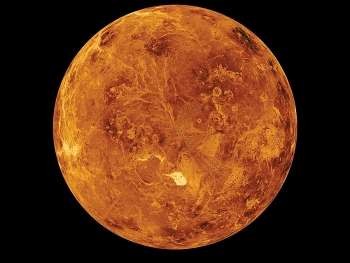 Facts about Venus: Top interesting Things Facts about Venus: Top interesting Things Venus is the second planet from the Sun. Venus is sometimes referred to as the Earth’s sister planet due to their similar size and mass. ... |
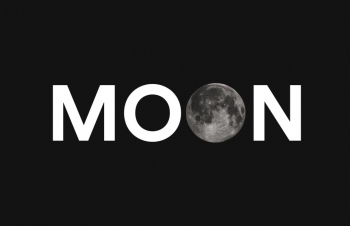 Facts about the MOON: Top 12 Interesting Things Facts about the MOON: Top 12 Interesting Things At a distance of 384,400 km from the Earth, the Moon is our closest celestial neighbour and only natural satellite. Like the Earth itself, the ... |


























